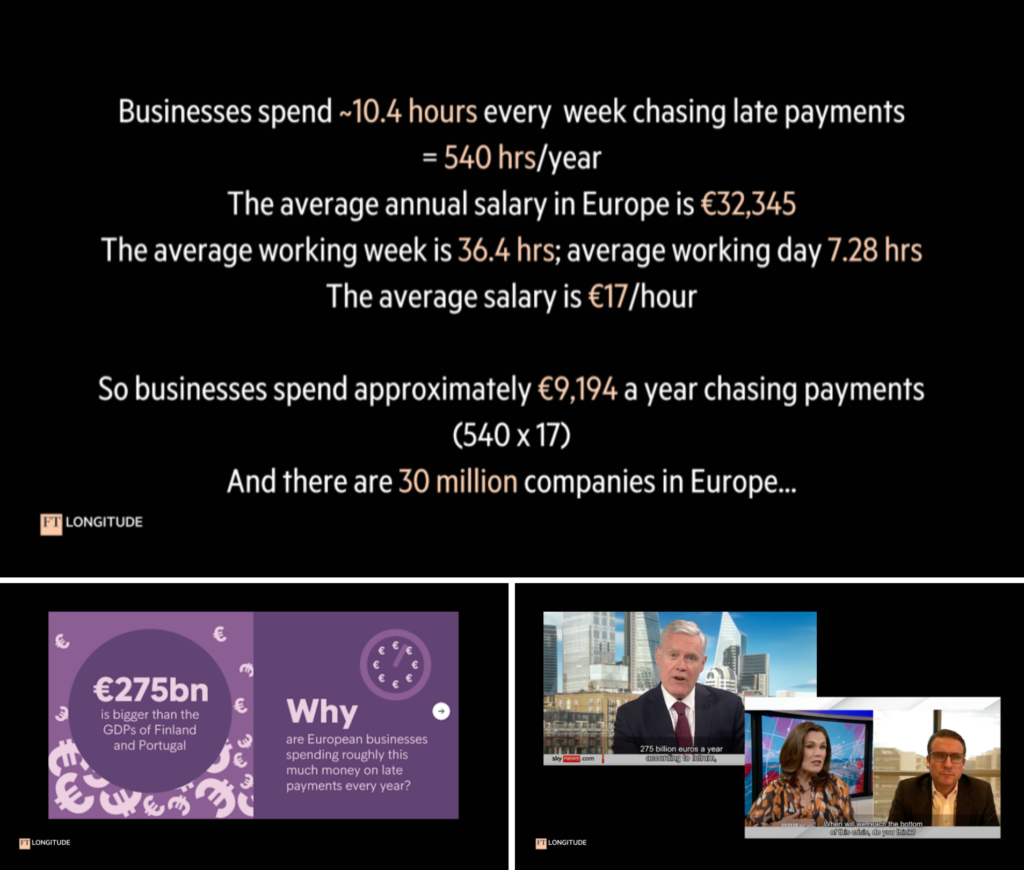Five takeaways for differentiated AI thought leadership
Insights from our future of work, strategic leadership and climate desks
In today’s rapidly evolving AI landscape, brands must navigate a complex environment to create impactful thought leadership. This article captures insights from specialist editors at FT Longitude, discussing how emerging AI themes are shaping thought leadership across workforce diversity, strategic decision-making, and climate-related innovations. By examining these intersections, we offer advice on leveraging AI for compelling narratives and practical solutions.
Our editors

Piers Tomlinson: We’ve seen AI content evolving quickly, and it’s essential to find a distinctive angle. How can brands stand out in the AI thought leadership space?
Chanice Henry: This year is pivotal as many companies move from planning to implementing AI and they’re looking to companies with deep insight and expertise to help. The high-level, fluffy content won’t cut it anymore. Brands need to support their audience with detailed, practical guidance. Successful implementation requires a carefully calibrated approach, like crowdsourcing ideas and experimenting in controlled environments. Responsible AI, especially explainability, is crucial. We need to support the global community on implementing AI at a granular level while ensuring our content remains engaging and not overly technical.
Hannah Freegard: Often, the audience doesn’t care about the finer technical details as much as businesses think. It’s more about linking AI to specific challenges and providing tangible action points. Good thought leadership should address how organisations can deliver new value and achieve their goals. Instead of abstract ideas, focus on use cases that can be acted on now to implement AI effectively.
Five takeaways for differentiated AI thought leadership
1. Strive for practical, precise content that is integrated with your broader messaging
Piers Tomlinson: We’ve seen some businesses shoehorn AI into content where it doesn’t belong, resulting in outdated and bland material. Integrating AI properly into a larger story, such as AI and diversity or AI and climate, can create a more robust and relevant narrative. How can brands ensure they’re presenting a fresh perspective on AI?
Hannah Freegard: Investing time upfront in getting the research hypotheses right is essential. Strong, clear hypotheses can guide the research and help uncover diverse perspectives within an organisation. For example, comparing views between senior leaders and junior employees can reveal perception gaps and provide valuable insights. Clever survey design is fundamental to identifying leader groups and linking AI performance to tangible outcomes like revenue growth.
2. Storytelling will lead your audience through the data and inspire them to act
Chanice Henry: It can be intimidating to say something new in a saturated space. Focus on audience pain points and zoom into the nitty-gritty details. For instance, addressing common mistakes in AI implementation and offering practical solutions can add real value. It’s about moving the needle in the right direction and demonstrating your company’s relevant expertise and innovation.
Piers Tomlinson: And don’t just present data. Use storytelling to guide your audience through the information, making it engaging and actionable. This approach helps to contextualise the data and make it more relatable.
3. Actionable insight is more compelling than technology showcasing
Hannah Freegard: Think with the headlines in mind from the beginning and design the survey accordingly. Don’t be afraid to tackle controversial topics sensitively and appropriately. Repeat surveys can help track adoption over time, linking it to financial growth, which appeals to journalists with its tangible data points.
Chanice Henry: Bold stances are necessary but should be backed by evidence. Ensure your content strategy is intentional, with a journalistic approach to survey design. Distinctive headlines and claims, supported by data, will place you in the intelligent influencer quadrant, cutting through the noise effectively.
4. Don’t be afraid of unexpected findings and unexpected viewpoints
Piers Tomlinson: One successful approach we’ve used involved a client survey on time wasted by finance teams chasing late payments. By analysing the data from different perspectives and comparing it with external sources, we extrapolated a significant figure. This led to extensive media coverage, showcasing how a promising data point, approached from various angles, can create a compelling story.
Chanice Henry: Be open to unexpected findings. These can provide fresh insights and make your thought leadership stand out. Counterintuitive results often generate more interest and discussion, making your content more memorable.
5. Create a data strategy to achieve media cut-through
Hannah Freegard: To ensure your research findings generate strong media stories, develop a robust data strategy. This means thinking about the headlines you want to achieve from the start and designing your research to produce those key findings. Regularly updating your data and creating tools that the media can use, such as trackers, can help maintain interest and relevance.
Piers Tomlinson: Having a clear data strategy from the outset helps you create content that is not only insightful but also newsworthy. This approach ensures that your findings are compelling and widely covered by the media.
Creating distinctive campaigns needs real-world data and insight. Only with this approach can you build lasting connections with your audiences, strengthen perceptions of your brand, and help you to stay front of mind as an industry leader.
By integrating AI into larger, relevant themes and maintaining a clear, bold perspective, brands can ensure their thought leadership stands out in a crowded market.
As AI continues to shape our world, the blend of human creativity and technological advancements will be key to driving meaningful change and innovation
Watch the full session – Cutting through the noise: AI and thought leadership – including more practical insight from our campaign strategists and industry leaders on demand here.
Ready to embark on your AI thought leadership mission? We’ll help you to navigate and overcome any challenges you currently face in creating differentiated thought leadership and learn how to get more out of your content campaigns.
Get your brand on the map
If you’re interested in talking to one of our strategy experts to help determine how you can stand out in the crowded thought leadership market of AI, get in touch and one of the team will be in touch.
- Help your company find its unique position on AI
- Benchmark your current content against top performing AI campaigns
- Learn best practice on how to tell stories and engage your audience
Sign up to the newsletter
We help organisations stand out, speak with authority and spark inspiration, so change can happen. That’s real intelligence with influence. Sign up to our newsletter to get regular updates.
Subscribe






 Back
Back

 Book a meeting
Book a meeting
 Book a meeting
Book a meeting


